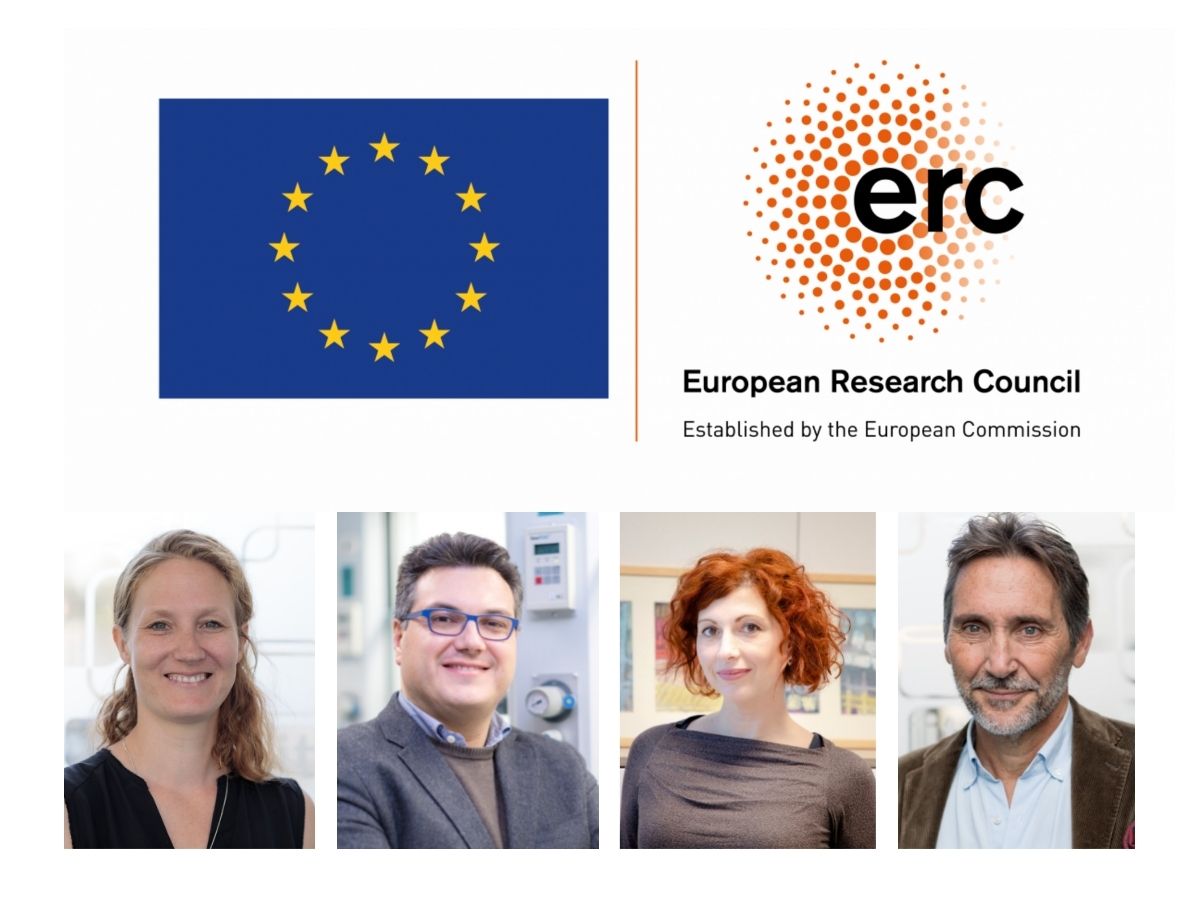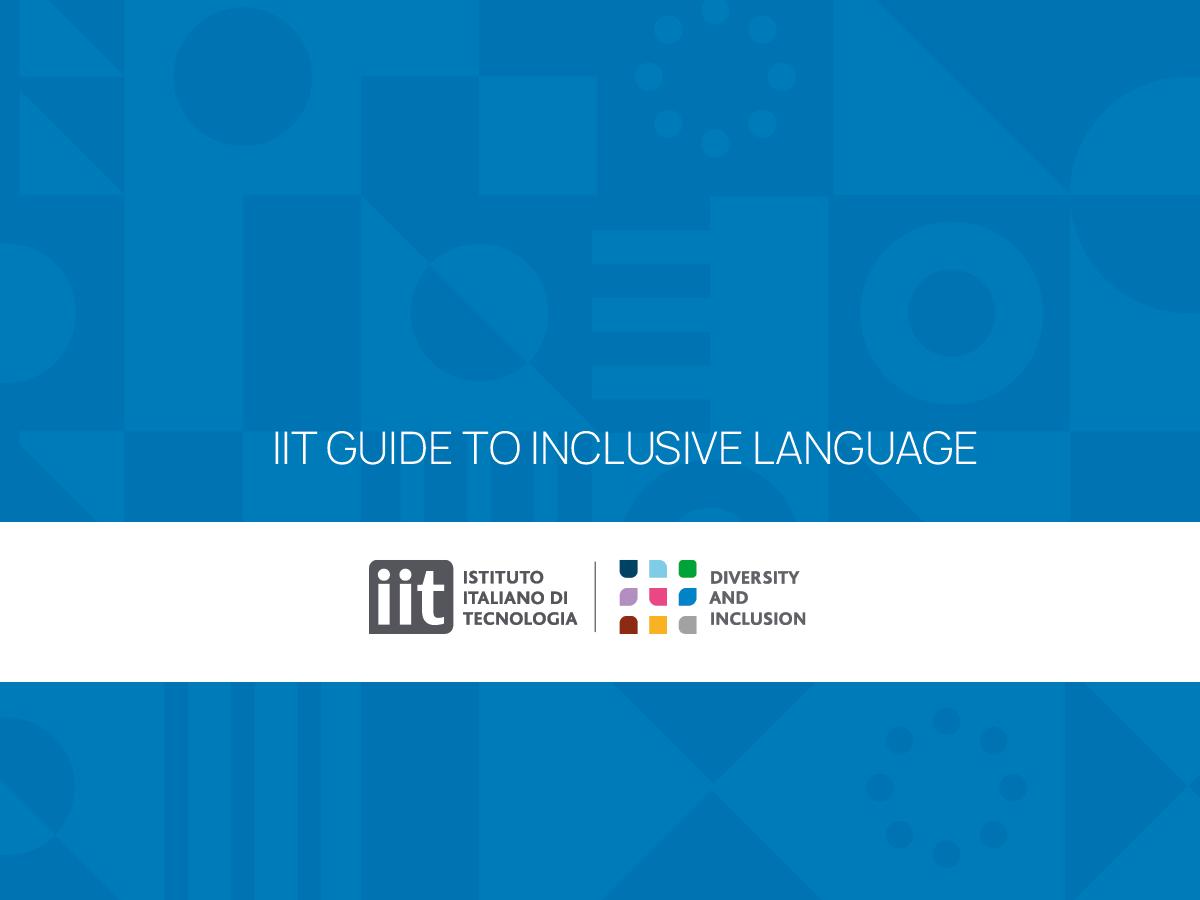Ilka Kriegel, Monica Gori, Paolo Decuzzi and Antonio Bicchi are the IIT researchers awarded today with Proof of Concept (PoC) Grants by the European Research Council (ERC)
They will have €150,000 each to bridge the gap between the results of their pioneering research and the early phases of its commercialisation
Their projects have in common the importance of developing new technologies that may have a positive impact in our society, in particular where fragilities appear. Therefore, their projects’ goal is to realize new technologies for responding to impairments that may occur in people’s life affecting their health, such as tumours, blindness and amputations, but also new techniques to substitute raw materials that electronics industry uses but may be no longer available in the future.
The ERC announced today the list of 166 ERC grantees that have won Proof of Concept Grants, with a total investment of €25 million. 22 projects will be financed in Italy, being the second country, after UK, to receive the highest number of PoC grants in Europe. The Proof of Concept grant scheme is open only to researchers who are or have been previously funded by the ERC. They use PoC funding to develop findings they have made during research projects funded by their ERC Starting, Consolidator, Advanced or Synergy Grants.
Ilka Kriegel was recipient of ERC Starting Grant in 2019 and is currently coordinator of the Functional Nanosystems lab at IIT in Genova. She will use her additional ERC grant to develop new transparent conductive inks to be used in applications ranging from flat-panel displays, flexible displays, touch-screens, thin-film or organic photovoltaics. The idea is to substitute critical raw materials, such as Indium tin oxide (ITO), which is a very promising material because of its well-established properties, but may cost too much and be too scarce in the future. Hence, Kriegel’s goal is to invest into good alternatives from non-critical raw materials. Her project, CONDINKS, aims at developing conductive inks from non-critical raw materials with properties competing with benchmark systems. CONDINKS will develop novel synthesis strategies that exploit nanoscale dopant engineering and carry these results to industrial environments using water based (and hence non-toxic) flow synthesis processes for the upscaling.
iReach is the name of Monica Gori’s project, which will focus on the realization of a multisensory system to help visually-impaired infants to train their sensory-motor skills from the first months of life. Gori is leading IIT’s Unit for Visually Impaired People (U-VIP) Lab in Genova, studying how sensory-perceptual capabilities change and interact during development in children with and without disabilities, in order to develop rehabilitation technologies. She was the recipient of an ERC Starting Grant in 2020 and the ERC PoC Grant will permit her to develop further her technologies, proposing them for commercialization. Therefore, visual impairments affect the infants’ reaching and motor skills, space perception, playing, socializing, physical functioning, psychological well-being, and health service needs. Effective rehabilitation technologies to enhance visually impaired infants’ skills depend critically on a better understanding of the neuroscientific bases of multisensory and body processing. However, to date, these abilities can only be assessed qualitatively based on observational approaches. With iReach, Gori aims to solve this problem, designing and developing a multisensory system that will provide non-invasive recording and training of the sensory-motor skills in visually impaired infants.
Paolo Decuzzi won the ERC PoC Grant for his invention “microMESH”, which originated within the research activities conducted in his previous ERC-funded projects and consists of a micro-sized polymeric net to be wrapped around brain tumors. Decuzzi is Founding Director of the Laboratory of Nanotechnology for Precision Medicine at the IIT in Genova and his project’s main research theme is the treatment of glioblastoma, which continues to be the less curable form of any cancer with an overall average survival of 20 months from diagnosis. Decuzzi and his interdisciplinary team will work to prove that microMESH can be engineered to deploy intracranially a chemo-immuno-combination therapy to eradicate glioblastoma and minimize its life-long complications. MicroMESH has been explicitly designed to geometrically conform to the tumor margins and integrate with the malignant mass, in order to augment the permeation of the therapeutic agents, and therefore their efficacy. The success of the project will result in preclinical tests and, upon subsequent completion of toxicological and proper manufacturing studies, advancement to Phase 1/2 clinical trials. Along the path to the clinic, microMESH is being supported by advisors at the Deloitte HealthBiotech Accelerator and the SPARK Stanford Program in Translational Research.
Other fragilities, like amputations, are at the core of Antonio Bicchi’s project. Bicchi coordinates the Soft Robotics for Human Cooperation and Rehabilitation Lab at IIT in Genova and he was recipient of several ERC grants, among which an ERC Synergy Grant in 2018 for the project Natural BionicS, focusing on arm prostheses with “natural” features. The new ERC PoC grant will contribute to translate the scientific and technological progresses of that project into one of the very first practically applicable force/tactile display systems for prostheses in order to add a sort of “sense of touch”. Historically, prostheses have focused on the motoric aspect, devoting attention to the design and control of artificial limbs to recover manipulation or locomotion abilities to the extent possible. Much less has been achieved until today in terms of replicating the ability to sense interactions with the environment, other people, and own body through the haptic channel. Bicchi’s new project, named WISH – Wearable Integrated Soft Haptic – aims to realize a new wearable fluidic force feedback device limbs prostheses, composed by soft silicone chambers along with their actuation and control units, to exert pressures in multiple specific stump sites. The final goal is to transform WISH into a technology platform supporting different devices for different types of prosthesis available in the market, for both upper and lower limbs.





